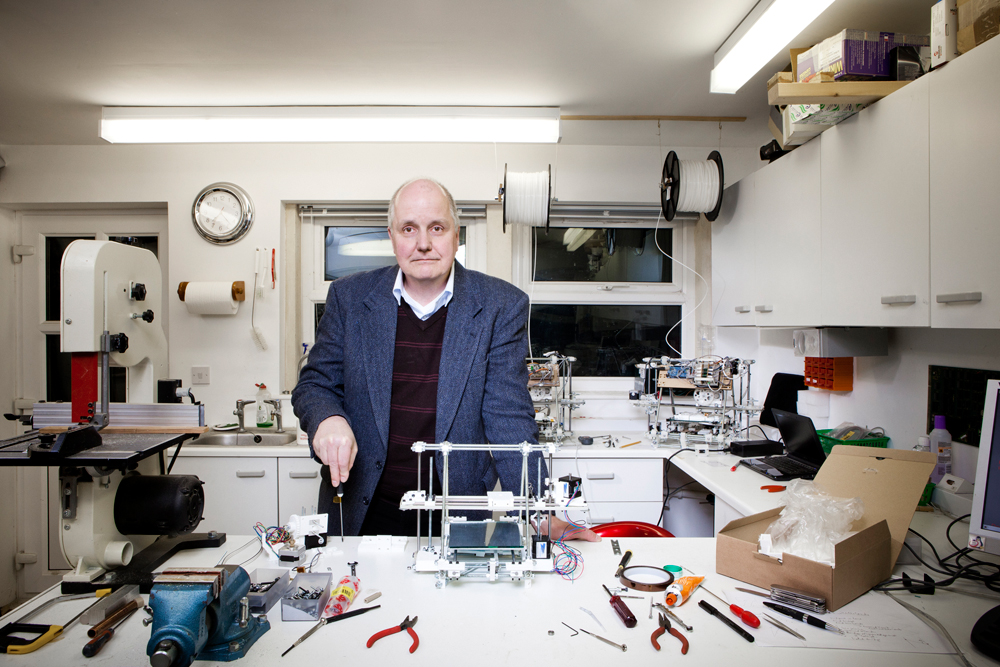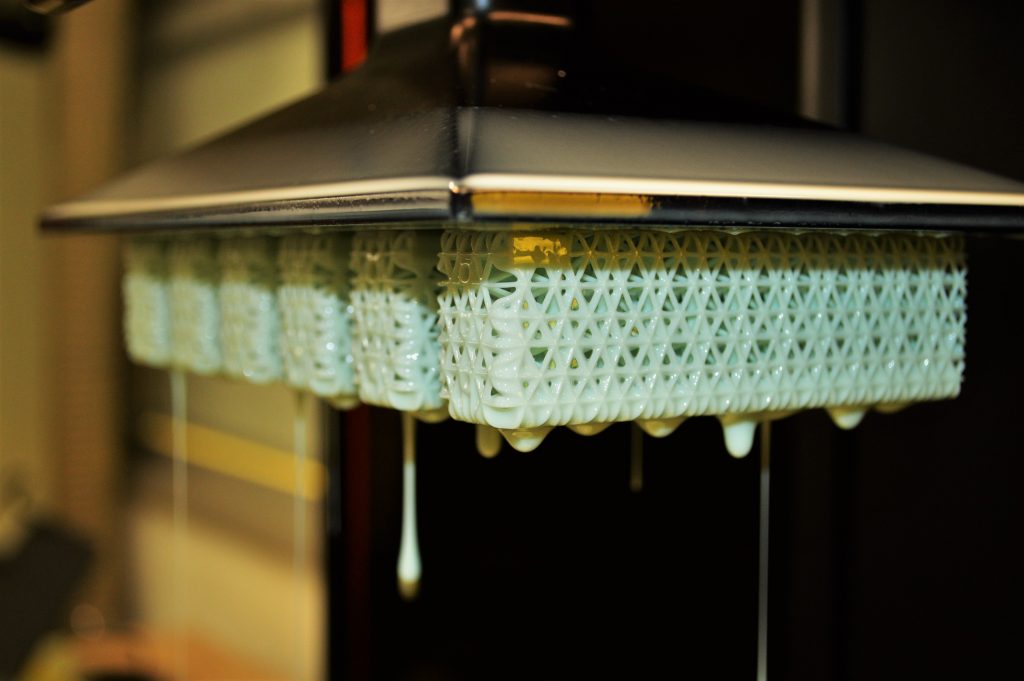Insiders and analysts predict the 3D printing trends to watch in our latest series of articles focused on the future of 3D printing.
Dr. Adrian Bowyer, the founder of RepRap, has made a blog post outlining a new method of multi-material resin 3D printing.
Following a recent Tweet that stated “SLA can’t do multiple materials in a single print”, Bowyer was met with a number of responses pointing out just how wrong he was. As is the case with any life-long learner, he saw it as an opportunity to broaden his horizons and share his own ideas on how to realize multi-material 3D printing using two or more resins.
Bowyer describes his method as simple but wasteful, so those that prioritize material savings should take a seat before proceeding.

How does resin 3D printing work?
To appreciate Bowyer’s method, it’s essential to understand how conventional single-material resin 3D printing works. Vat photopolymerization, which encompasses the SLA, DLP, and LCD 3D printing technologies, involves curing photopolymer resins into solid parts.
A UV-sensitive liquid polymer is poured into a tank that rests on top of a transparent film window. Underneath the window is a UV light engine filtered by an LCD mask, which exposes certain areas of the resin above to UV light. This cures the exposed areas of resin into a solid layer on the build plate. The build plate is raised by a fraction of a millimeter and the process repeats itself, curing layer after layer until the final 3D object has been fabricated.
This process works but you can’t have more than one resin in the tank, not without cross-contamination, so multi-material prints aren’t an option.

Bowyer’s multi-material approach
Bowyer’s multi-material proposal is a simple one. You could print the first layer in resin A and pour it away. Then add resin B and print the first layer again in resin B. Moving onto the second layer, you could print in resin B, pour it away, and print it again in resin A. By cycling through two resins like this, you could print every layer in a part with two different materials. To automate the resin removal process, you could angle the 3D printer towards one of its corners and drain the resins out using a solenoid valve.
Of course, this sounds too good to be true. It wouldn’t work because resin is sticky and simply pouring it out wouldn’t eliminate the problem of cross-contamination. Pouring and draining resin also results in bubbles, so those would have to be removed before any layers are cured.
To fix the cross-contamination issue, Bowyer proposes a brute force approach (this is what makes it wasteful). When replacing resin A with resin B, you could use resin B to flush away the remains of resin A, discarding the contaminated resin A-B mix. You could then pour pure resin B in, doing the same when it comes time to replace resin B with resin A.
This leaves the bubble problem. Resins have a very low vapor pressure, which is what makes them suitable for conventional vacuum resin casting. If the proposed 3D printing process were to take place in a vacuum chamber, the bubbles in the vat would be eliminated altogether.
If this is simply too wasteful, Bowyer could also see a third solvent being used to flush the resins between material changeovers. Isopropyl alcohol, the go-to resin cleaner, wouldn’t work because it has a vapor pressure of 33 hPa at 20°C, meaning it would just boil in the vacuum. However, an organic solvent with a lower vapor pressure such as aniline (0.4 hPa at 20°C) just might work.
Bowyer concluded, “I can see no technical reasons why the process described here wouldn’t work. And it could obviously be extended to use any number of resins, not just two, allowing insulators and conductors, different filler materials, and different colours.”
As champions of open-source, Bowyer and the RepRap community have been the source of several novel 3D printing ideas over the years. The British engineer has previously detailed the design of a solenoid (a type of electromagnet) bed heater for use with FDM 3D printers. Unlike a conventional heating element, a solenoid heater would also allow for the print bed to be removed once the heating was turned off.
More recently, RepRap created a novel Python script that enables users to 3D print low-cost PLA beams that are as stiff as steel counterparts. The open-source FreeCAD program is designed to be as accessible as possible, as it only requires users to specify some very basic parameters. The script then automatically generates the entire beam in the form of a 3D printable model.
Interested in resin 3D printing? So are we! Take our resin 3D printing survey now.
Subscribe to the 3D Printing Industry newsletter for the latest news in additive manufacturing. You can also stay connected by following us on Twitter, liking us on Facebook, and tuning into the 3D Printing Industry YouTube Channel.
Looking for a career in additive manufacturing? Visit 3D Printing Jobs for a selection of roles in the industry.
Featured image shows Dr. Adrian Bowyer. Photo via Phaidon.


